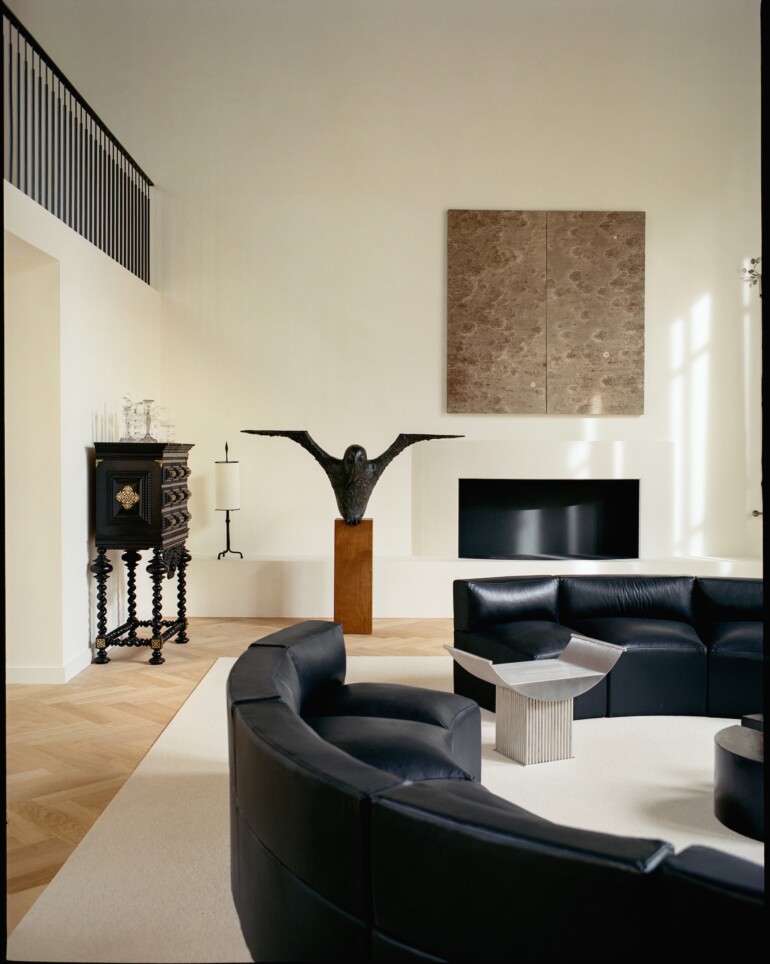Text Dzenana MUJADZIC
With her latest project, »Villa N« architect and designer Katja Pargger demonstrates a keen sense of materiality, craftsmanship, and spatial dramaturgy. The recently completed private residence in the Paris suburbs captivates with its restrained interventions in the existing building fabric, subtle historical references without nostalgic retrospection, and a pointed spatial effect that only precisely placed art can evoke.
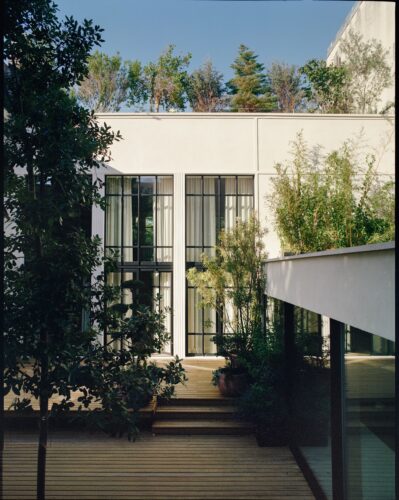
Chapter What role do timeless elegance and architectural permanence play in your project Villa N, and how do you personally define these terms?
Katja Pargger For me, timeless elegance means combining design clarity and reduction with a fine sense of materials and proportions. With Villa N, I deliberately wanted to avoid fashionable gestures and instead create a balance between the classic substance of the house and a modern, almost silent interior. For me, architectural permanence is reflected in a space that still radiates relevance and dignity even decades from now—not through loudness, but through attitude. I deliberately preserved the high ceilings and the classicist facade, but reinterpreted them—with mineral plaster and glass that makes the garden a constant companion.
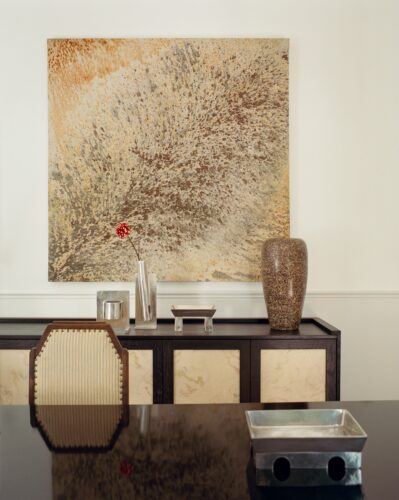
Chapter The design features numerous historical references as well as influences from art and design history. Is there an architectural or design tradition that has a lasting impact on your creative work?
Katja Pargger I feel deeply connected to the spirit of American modernism, especially the architecture of Rudolph Schindler. This way of combining functionality with technical and aesthetic precision has always inspired me. At the same time, I also find formative influences in design that incorporates a love of handcrafted details—as can be found in the Wiener Werkstätte or Art Déco. In Villa N, I wanted to make this dialogue between the clarity of American modernism and the ornaments of the Wiener Werkstätte tangible—with a reference to history, but without a nostalgic look back. This fusion of cultural influences gives the architecture a timeless relevance that is simultaneously anchored in the present.
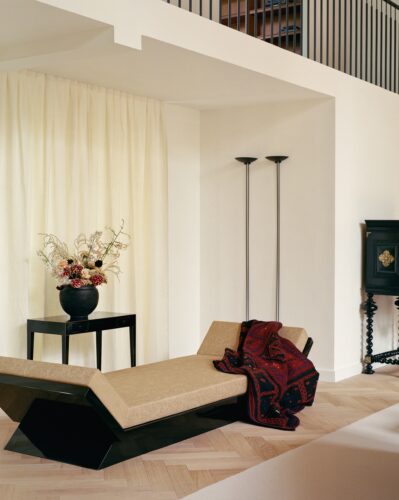
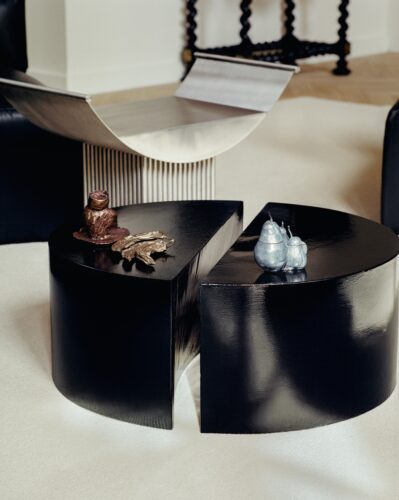
Chapter In addition to its impressive visual impact, what conceptual idea is behind the circularly designed sofa and what role does it play in the interior design?
Katja Pargger For me, the two semicircular sofas are more than just pieces of furniture—they define a place of encounter, of intimacy, almost like a Conversation Pit, but reimagined. Their shape invites you to turn to each other, to share the space and to appropriate it without dominating it. In a living room as spacious as that of Villa N, the sofa creates an inner pole of calm, a center. It is also a playful moment that contrasts with the very clear floor plan—a little twist in the big picture.
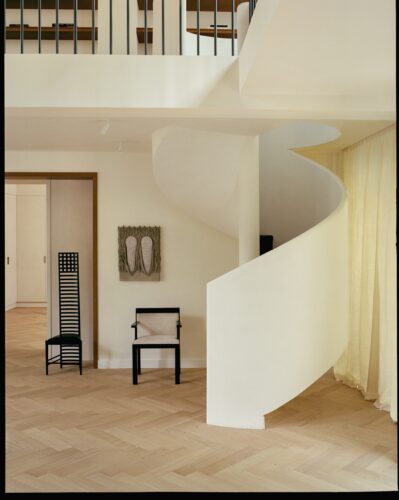
Chapter The building houses numerous works by contemporary artists. What criteria were used to select them, and what synergies arise between them and your design vision?
Katja Pargger I don’t see art as decoration, but as an active part of the spatial effect. The selection of works was very intuitive, but never arbitrary—I looked for positions that radiate a certain independence and can create tension. Works by Clément Borderie or Ciprian Tocu, as well as the sculptures by Xolo Cuintle or the tapestry by Zuzanna Czebatul, bring something idiosyncratic to the house—they are autonomous voices in an orchestrated space. In contrast, there are also works by lesser-known, sometimes long-deceased designers and artists, who unfold a special presence with their patina and their lived lives. This mixture creates a silent communication between the new and the old. Synergies arise where gaps are deliberately left—Umberto Eco’s idea of the open work of art was an inspiring thought that I took up in my work.
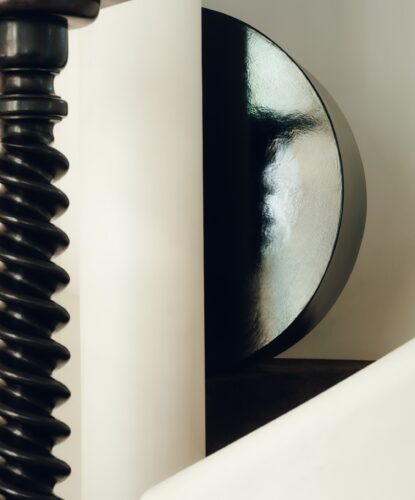
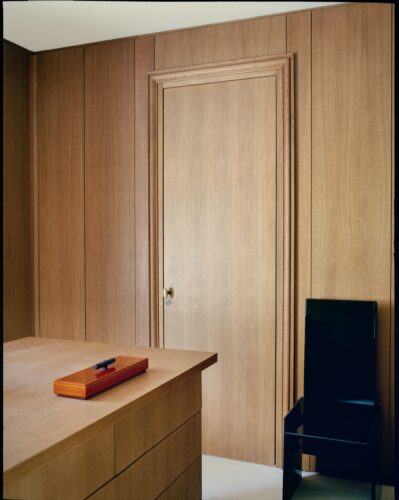
ARTICLE FIRST PUBLISHED IN CHAPTER №XII »SIMPLICITY« — SUMMER 2025

